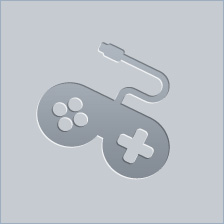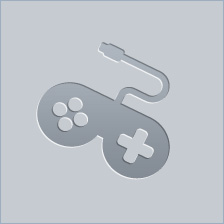10 Digits Learning Toy Hardware Review
Price: $43
Hardware/iOS Integration Rating: 




Usability Rating: 




Reuse Value Rating: 




Build Quality Rating: 




Bottom Line: 10 digits is a classically-styled wooden numbers learning toy that work with the iPad to teach early math concepts.
Overall Rating: 




Recently, I was given the chance to review the 10 Digits learning toy – wood numbers that interact with the iPad and other tablets. Two apps work in tangent to this number set that teaches basic number recognition, addition and the manipulation of numbers up to one hundred within these Montessori-styled applications. I was eager to test this new toy as its brightly colored classic good looks and wooden construction remind me of the wood number puzzle my son had as a toddler, which he loved and oddly anthropomorphized by dragging these numbers within their frame to listen to stories or play with other toys as though this puzzle would take an interest in these activities.
A close look at each of these wooden numbers from the 10 Digits toy will find three soft plastic feet on the back to allow these pieces to work on top of the screen of the device. Each foot pattern is unique; they’re akin to Braille and work with the iPad and other tablets to recognize each number in use. Both the apps 10 Fingers and Up to 100 have free lite versions to download and unlock easily using the 10 Digit toy pieces. I admire the clean look of these apps; the white screen, boldly colored numbers, and other details seen with bright translucent colors and subtle brush strokes are details reminiscent of felt tip markers on a dry erase board.

Within the 10 Fingers – Lite app, three sections with two modes each are available to explore that include the placing of these wood digits on the screen, which will in-turn trigger the same number, here demonstrated by illustrated blue snails – be it three snails for the number three or seven snails for the number seven – as well as the ability to choose the correct number that amounts to the sum of different objects on the screen for a slightly more interactive counting moment that children will enjoy. There are also four other activities within two two sections that further explore early math.
It is worth noting that this app allows one to experiment with fingers as well as the wooden numbers, which I appreciate. I question if the use of fingers is a better experience at some points within this app when simple animated counting elements are included. The use of little hands interacting directly with these apps becomes especially handy in the first half of the last area of 10 Fingers – Lite, as here children are able to choose numbers to add together. The wooden digits work well for adding separate numbers such as one and two or three and four, but because the first number pressed into the screen does not register for longer than it is held onto the device, it is not possible to add one and one or five and five with the wood pieces. Luckily, success can be had using fingers that can be kept on the screen long enough to complete this simple addition problem. What I would also like to see done differently is for the narrator to speak the first number and then the answer, such as when adding two and three to get the answer five. Here, the narrator only speaks "two… five" without mentioning the three or saying the word "plus" within this problem.
 The second app in this series, Up to 100 – Lite is more for older children (four to seven) and increases the conceptualization of these numbers in two sections, both with three difficulty levels lovingly notated as three different chicken sizes – a chick, a larger fowl, and a full-sized hen – charming details that will make users smile. The first exercise allows players to choose any two wood numbers that when pressed will create the double digit as seen circled in a scrolling section at the top of the screen, in order to show where within the numbers one to one hundred this number falls. The intermediate level of difficulty will ask children to look at the number scroll and to build with missing digits using the wooden digits. The most difficult mode of this area will offer children a printed two-digit number for them to build, complete with narration in case they have a hard time recognizing these words.
The second app in this series, Up to 100 – Lite is more for older children (four to seven) and increases the conceptualization of these numbers in two sections, both with three difficulty levels lovingly notated as three different chicken sizes – a chick, a larger fowl, and a full-sized hen – charming details that will make users smile. The first exercise allows players to choose any two wood numbers that when pressed will create the double digit as seen circled in a scrolling section at the top of the screen, in order to show where within the numbers one to one hundred this number falls. The intermediate level of difficulty will ask children to look at the number scroll and to build with missing digits using the wooden digits. The most difficult mode of this area will offer children a printed two-digit number for them to build, complete with narration in case they have a hard time recognizing these words.
The second section in Up to 100 – Lite includes one hundred beads arranged in ten rows of ten to further help children visualize these numbers. As children add a number to the tens spot of what will be a double-digit number, these dots will become highlighted in the color of the number selected – so when working with the number 56, five rows of ten are lit red, while the six number will light up six yellow dots that represent the ones section of this number. The medium section of difficulty gives children a number to create by matching the correct numbers to the double-digit number seen on the screen, and the most challenging mode in the area simply offers children the beads filled in for them to acknowledge, from here they choose the correct double-digit number themselves. Do also check out the setting page within Up to 100 – Lite as this app can be nicely personalized, including an ability to choose from provided numbers instead of using the wooden digits if one so desires.
 The functionality of these wooden digits on the screen of the iPad within these apps is good, and I admire the fact that in any position these numbers – be it with the numbers on their side, upright, or upside down – will register correctly, with the exception of the six and nine which are thoughtfully interchangeable, being read as either number based on the placement on the screen. At first my husband and I were concerned that the need to press versus rest the numbers on the screen might cause some damage to our devices, yet the act of pressing instead of simply placing these pieces is a more tactile experience, which is an important aspect to Montessori-style learning. Because these wood pieces work as intended over my screen protector, the risk to our iPad presumably is mitigated. However, it’s worth mentioning that my son, now almost seven, has a hard time pressing these numbers down evenly so that all three feet come into contact with the screen at once, especially on a soft surface like his bed, so I do recommend the use of these wooden numbers on a hard surface like a table or even floor.
The functionality of these wooden digits on the screen of the iPad within these apps is good, and I admire the fact that in any position these numbers – be it with the numbers on their side, upright, or upside down – will register correctly, with the exception of the six and nine which are thoughtfully interchangeable, being read as either number based on the placement on the screen. At first my husband and I were concerned that the need to press versus rest the numbers on the screen might cause some damage to our devices, yet the act of pressing instead of simply placing these pieces is a more tactile experience, which is an important aspect to Montessori-style learning. Because these wood pieces work as intended over my screen protector, the risk to our iPad presumably is mitigated. However, it’s worth mentioning that my son, now almost seven, has a hard time pressing these numbers down evenly so that all three feet come into contact with the screen at once, especially on a soft surface like his bed, so I do recommend the use of these wooden numbers on a hard surface like a table or even floor.
Even with this note, I do like the fact that more then ten languages are included, so children can learn their numbers in a multitude of languages within these very hands-on activities. The access to two separate apps is a nice benefit when purchasing the 10 Digits learning toy, which maintains the simplicity of the classic wood number puzzle nicely while functioning within one's devices in a way that lives up to Montessori's approach to learning – although the price point does seem a little steep for a toy one may buy for a toddler or child in early grade school. With few bells and whistles, there is enough use of fun details to keep these exercises interesting while never having any distracting elements, making this a nice early math toy and related applications for toddlers and beyond to learn from and enjoy.























